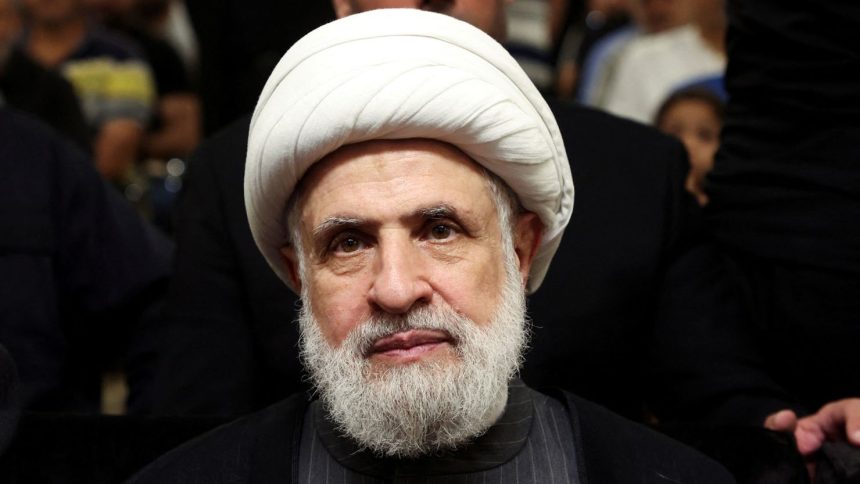CNN
—
Hezbollah has named Shiite cleric Naim Qassem as leader, over a month after his predecessor Hassan Nasrallah was killed in an Israeli airstrike.
The group’s Senior Council elected Qassem as secretary-general, Hezbollah’s media office said in a statement on Tuesday, adding that Qassem is committed to prophet “Mohammed’s authentic Islam” and the core principles of the group.
Qassem now leads a group once regarded as Iran’s most formidable proxy in its conflict with Israel – a force that, in recent weeks, has been significantly weakened by Israeli strikes, with top leaders killed, thousands of fighters wounded, and missile capabilities degraded. The group now faces an intense Israeli military campaign in southern Lebanon.
Responding to the announcement, Israeli Minister of Defense Yoav Gallant wrote on X: “Temporary appointment. Not for long.”
The cleric had long been the group’s second-in-command, serving as deputy chief to the late Nasrallah. He is one of the few leaders of the Iran-backed group to survive Israel’s recent onslaught on the organization, which saw some of its key figures assassinated.
“The organization was left with little choices in terms of the top tier clerics,” Mohanad Hage Ali, deputy director for research at the Malcolm H. Kerr Carnegie Middle East Center in Beirut, told CNN, adding that Qassem was “a known face” and therefore his appointment was “a no-brainer choice for the organization.”
Hashem Safieddine, thought to have been a much stronger contender to succeeded Nasrallah, was killed in an Israeli attack in Beirut, along with other commanders.
Born in 1953 in the southern Lebanese village of Kfar Kila, Qassem is a well-known member of the old guard. The 71-year-old Shiite cleric helped found Hezbollah in 1982, and has served seven consecutive terms as deputy secretary-general since 1991. He also oversees the group’s parliamentary activities.
Before his work with Hezbollah, he took part in “Harakat al Mahrumin,” or the Movement of the Dispossessed – a political group that later morphed into the Shiite Amal movement, a Hezbollah-allied group that is now led by speaker of the Lebanese parliament, Nabih Berri.
The cleric has long been under Israel’s radar. Before killing Nasrallah, Israel also targeted his predecessor Abbas al-Musawi, who was killed in an airstrike in 1992.
Qassem was a chemistry teacher for six years before his days in Hezbollah. He often gave interviews on television and to newspapers. In 2015, he wrote the book, Hezbollah: The Story from Within, which told the story of the Hezbollah’s emergence as “resistance force” and political party that sought to counter Israeli occupation.
Despite his media prominence, he was not someone average Lebanese citizens could relate to, Ali said, making him unlikely to match his predecessor’s popularity. Qassem represented “the lower middle class,” while Nasrallah “belonged to the impoverished class in Lebanon,” Ali said.
The cleric has repeatedly condemned Israel’s war in Gaza, saying that Hezbollah’s “supportive front” for the Palestinians will only intensify “the more Israel increases its aggression, especially when it targets civilians.”
But Qassem is unlikely to be “an absolute leader” for Hezbollah, Ali noted. “It is more likely that he will be a coordinator of the different voices in the organization,” he said, adding that this may not be intentional on the part of the group, given there were few options to choose from after Israel exacted “a generational coup” by killing most of Hezbollah’s old guard.




